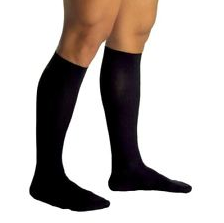
Compression socks offer a variety of therapeutic benefits ranging from cosmetic benefits and comfort to life-saving health treatments. Providing pressure to the ankles and calves might seem simple, but these non-invasive pieces of everyday medical equipment can be used by almost anyone to promote healthier legs and circulation, as well as for athletes and people who work in certain industries.
Let’s start by taking a look at what compression socks are and then we’ll move on to their medical uses.
What are Compression Socks?
Compression socks are elastic garments worn around the leg that provide pressure from the outside. Compression socks can also be referred to as compression stockings, compression hose, or sometimes flight socks.
Some lighter use compression socks are available over the counter at drugstores or online. These are not considered to be medical grade can be purchased without a prescription. These are often the type which is referred to as flight socks or travel socks. These types of compression socks typically have one uniform pressure throughout the entire length of the garment.
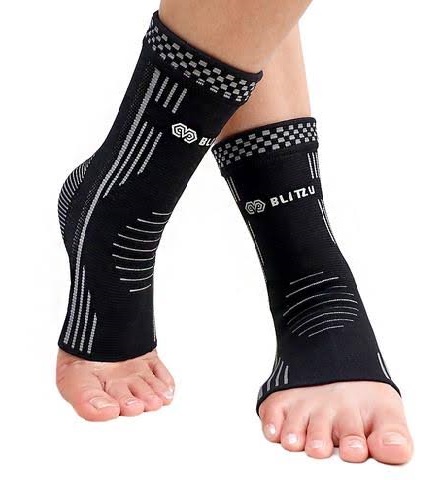
Medical grade compression socks come in higher pressures and can be sourced online but must be purchased using a prescription from your doctor. They are often made with graduated compression levels.
Graduated compression stockings are designed to provide the most pressure at the ankle, and the pressure then decreases as the sock moves up the leg. This design aids the circulatory system in fighting against the gravity pressures that pull blood and other fluids down toward the feet. Graduated compression socks that are tighter at the ankle prevent blood and fluids from pooling down low, and promote the pushing of blood and other fluids back up the leg and into the body where they belong.
What Compression Socks Do
Some of the most common uses of compression socks include:
- Improving blood flow.
- Preventing blood from pooling in the legs.
- Relief of symptoms caused by varicose veins, edema, and deep vein thrombosis.
- Prevent problems potential blood clots in the legs.
- Reducing pain and swelling in the legs.
- Prevention of dizziness upon standing.
Compression socks gently squeeze the legs to move blood up the legs. This helps prevent leg swelling and reduces the chances of blood clots. If you have varicose veins, spider veins, or have just had surgery, your health care provider may prescribe compression stockings.
Varicose Veins
A varicose vein is a highly visible vein located just beneath the surface of the skin. Varicose veins occur when blood collects behind the small valves in a person’s veins instead of flowing smoothly back to the heart after the blood has been deoxygenated. Varicose veins are more common in the legs and feet because blood returning to the heart has farther to travel.
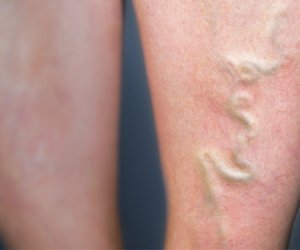
Doctors often recommend compression stockings to improve circulation, prevent varicose veins from a worse condition, and reduce pain or discomfort. Compression therapy helps to reduce venous pressure, prevents venous stasis and impairments of venous walls.
By compressing the surface veins, arteries and muscles, compression socks force circulating blood through narrower channels. The arterial pressure is increased, which causes more blood to go to the heart and little blood to go to the feet. Compression stockings may help to reduce the appearance and painful symptoms associated with varicose veins by supporting the circulatory system and minimizing the collapse of the interior of the veins.
Edema
Another medical issue that compression socks help with is severe swelling in the feet, ankles and legs. People who spend a lot of time standing on their feet, as well as those who have certain medical issues, may find that the fluid in their bodies tends to pool around the feet and ankles. Medical grade compression stockings help to reduce this tendency by fighting against gravity and pushing the fluid back up from the legs and into the rest of the body.
Deep Vein Thrombosis
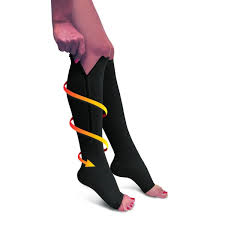
A condition caused by problems within the circulatory system, DVT is a very serious condition in which a person’s body produces clots in the blood and does not allow the blood to flow through properly. This condition is extremely dangerous as the clots in the legs can be let loose and “thrown” into vital organs such as the lungs. In this case, the condition may be fatal.
Wearing compression socks allows the circulatory system to keep the blood flowing and prevent the dangerous development of blood clots for those who might be at risk. Your doctor will provide you with information about the appropriate compression level for your needs.
Dysautonomia
Symptoms related to this condition include light-headedness, dizziness, fainting, low blood pressure and other issues. Many doctors recommend the use of compression socks in order to mitigate these symptoms and reduce discomfort related to this condition.
Pregnancy

Pregnant women, especially those on bed rest or with swelling problems in their feet, may benefit from the use of compression socks. They not only offer support to the circulatory system, but they can prevent the formation of dangerous blood clots for women who are confined to their beds for a time.
Your doctor will recommend the appropriate compression level for your needs during pregnancy.
Popular Articles on ComproGear
Rose Toy The Rose Sex Toy Viral TikTok Product
Which Compression Socks Are Right for You?
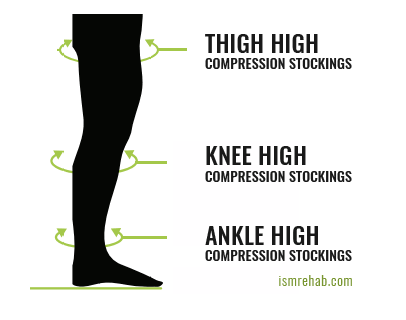
Modern compression stockings are more sophisticated and designed to provide consistent pressure in the legs, helping the blood to flow back toward the heart. Graduated compression stockings exert more pressure near the ankles and feet, providing an extra squeeze that promotes the flow of blood.
Because medical-grade compression socks are only sold with a prescription, you need to talk to your health provider about what kind of compression stockings are right for you. They vary based on length (knee-high, thigh-high or pantyhose) as well as compression level.
Pressure levels are measured in mmHg, which stands for millimeters of mercury. The most common compression levels are:
Mild (8-15 mmHg)–also called travel socks or flight socks, these are available without a prescription
Medium (15-20 mmHg) also available without a prescription
Moderate (20-30 mmHg)–Medical Grade Class I, these are the most commonly prescribed compression level
Firm (30-40 mmHg) –Medical Grade Class II
Extra Firm (40mmHg and above) these are Medical Grade Class III and are only for extreme cases
Compression Therapy Guide
Check with your doctor and consider these factors when choosing the right compression level for you:
Mild
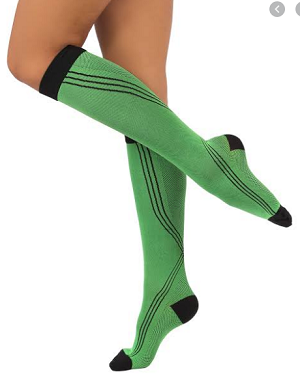
- Provides relief and makes legs less tired and achy.
- Prevents legs from fatigue caused by long periods of sitting or standing.
- Helps relieve minor swelling of feet, ankles, and legs.
- Prevents the formation of varicose and spider veins during pregnancy.
- Helps maintain healthy and energized legs.
- May be useful for people who travel on airplanes often, or for pilots and people who sit a lot without being able to get up, such as truck drivers.
Medium
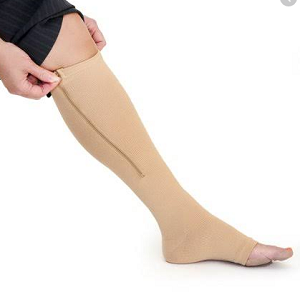
- Ideal for the prevention and relief of minor to moderate varicose and spider veins.
- Helps relieve tired, aching legs, and minor swelling of feet, ankles, and legs.
- Also helps prevent varicose veins and spider veins during pregnancy.
- It prevents deep vein thrombosis (DVT), also known as an economy class syndrome.
- Used in post-sclerotherapy treatment to help prevent the reappearance of varicose veins and spider veins.
- This is the ideal compression level for those traveling long distances.
- These are often used as nurse compression socks and are the best compression socks nurses wear regularly. They work great for long periods of time spent standing or walking.
Moderate
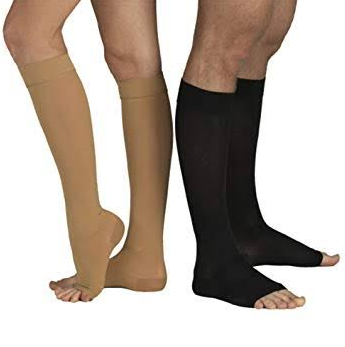
- Prevents and relieves moderate to severe varicose veins (also during pregnancy).
- For post-surgical and post-sclerotherapy treatment to help prevent the reappearance of varicose and spider veins.
- Helps in the treatment of moderate to severe edema or lymphatic edema.
- Helps with the management of active ulcers and manifestations of post-thrombotic syndrome (PTS).
- Relieves superficial thrombophlebitis.
- Prevents orthostatic hypotension (sudden fall in blood pressure when standing).
- Helps prevent deep vein thrombosis (DVT), also known as an economy class syndrome.
Firm
- Prevents and relieve severe varicose veins.
- Used in the treatment of severe edema and lymphedema.
- Used in post-surgical and post-sclerotherapy treatment to help prevent the reappearance of varicose and spider veins.
- Reduce symptoms of Orthostatic Hypotension and Postural Hypotension
- For the management of Venous Ulcers and manifestations of Post-Thrombotic Syndrome (PTS).
- Prevents deep vein thrombosis (DVT), also known as an economy class syndrome.
Prescription-strength, 40-50 mmHg Gradient Compression Stockings, are generally indicated for more serious venous diseases such as Acute Leg/Ankle Swelling, Varicose Veins, Chronic Vein Insufficiency, and Deep Vein Thrombosis.
Can Wearing Compression Socks Be Harmful?
In general, pressure socks are safe to wear for healthy people, as long as the doctor’s instructions are followed and the right compression rating is used. You also need to be sure you are wearing the right size because compression socks that are too small will be tight and can cause skin irritation or even cut off circulation. Compression stockings that are too loose will simply be ineffective and useless.
There are sizes from Small to 3XL plus size compression stockings, so there’s no need to limit yourself to wearing the wrong size.
Risks with the use of compressions socks are minor. The negative effects include skin irritation, discomfort, and temporary skin dimpling from the tightness. This is common with other products too. You can read about it at rose for women @ comprogear.
When worn incorrectly, discomfort is one of the first side effects of compression socks. Some people feel pain after removing compression stockings, others suffer from discomfort, pain and unpleasant sensations in their legs while wearing them.
Wearing compression socks for too long can as well cause the mentioned side effects. These stockings should be worn during the day and taken off before going to bed. Compression socks will help the most if you wear them every day while you’re awake, especially while you’re on your feet.
People with peripheral neuropathy, skin infections, dermatitis, pulmonary edema, and circulation problems should not wear compression stockings without doctor’s guidance.
If you’re choosing a medical-grade compression sock, you’ll need to get the help of your doctor for a prescription. However, once you have that, you can have fun buying compression socks of all sizes and colors online. Check out Comprogear for our latest offerings and have your socks delivered right to your door with a 100% satisfaction guarantee. Your legs will thank you!
This page last updated March 29, 2022
